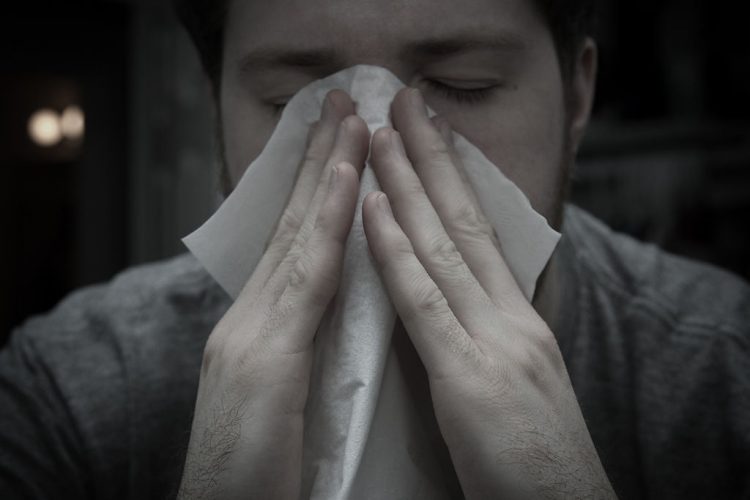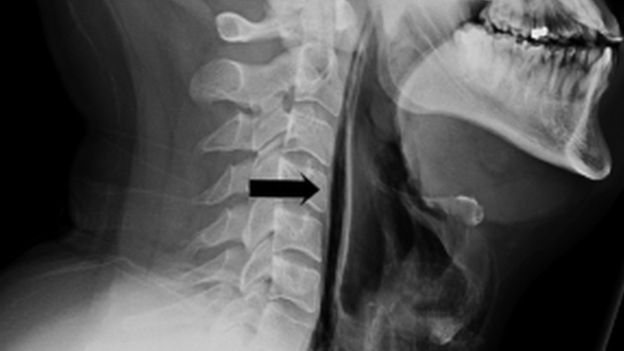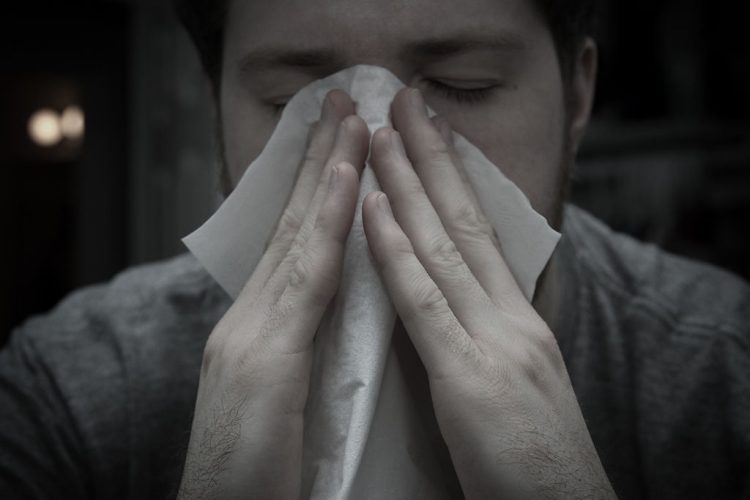In a report released on Tuesday, the journal BMJ Case Reports detailed the bizarre and somewhat frightening case of a 34-year-old British man who ruptured his throat by suppressing a particularly powerful sneeze. The man, described as “previously fit and well” attempted to politely contain his sneeze by “pinching the nose and holding his mouth closed”, which you are apparently not supposed to do.
The force of the sneeze backfired into his throat and perforated his pharynx, the part of the throat right above the larynx and esophagus. He was unaware of the damage initially, but after realizing that his voice had changed and his throat hurt when he swallowed, he knew something was wrong. His neck began to swell up as well, and whenever he moved his head, he experienced an unsettling sensation of popping and crackling.
The man went to the emergency department at Britain’s Leicester Royal Infirmary where doctors were able to diagnose his condition. X-rays revealed that the sneeze had ruptured his throat allowing air bubbles to make their way into the tissue and muscles of his chest, a condition known as subcutaneous emphysema and pneumomediastinum, which caused the popping sensation from his neck to extend all the way to his rib cage. Doctors had to take action quickly as the rupture left the man at risk for complications such as deep neck infection.

Unrelated photo (William Brawley/Flickr)
Vomiting, retching, and certain kinds of trasuma are the typical causes of spontaneous rupture of the pharynx, a very rare condition. Apparently suppressing a sneeze can be added to that list as well.
“It’s powerful,” allergist Eli Meltzer told NPR’s Nancy Shute. “We actually blow out the sneeze at 40 mph. The discharge can go 20 feet. And it’s said that 40,000 droplets can come out when you spritz with the mouth and the nose when you sneeze.”
The man was put on a feeding tube and given intravenous antibiotics to protect against infection until the swelling and pain subsided. After a week of recovery he left the hospital with “advice to avoid obstructing both nostrils while sneezing,” the report said. His follow up exam two months later revealed a clean bill of health.
According to rhinology specialist Professor Richard Harvey from the University of New South Wales and Macquarie University, the man’s case is unusual, but not unprecedented. In 2011 a similar case study was published, and many other cases show that stifling a sneeze have lead to the formation of air pockets in places they shouldn’t be.
 Photo: BMJ Case Reports
Photo: BMJ Case Reports
“There’s other things you can bust by holding in a sneeze,” Harvey told ABC News. “You can blow air into your orbit — basically your eye socket.” The resulting condition is called orbital emphysema.
“Most people who get orbital emphysema it just looks awful, they get this big puffy eye. It’s not usually associated with sight loss,” Professor Harvey added.
Emphysema, or air pockets in soft tissue, can also occur in the chest and neck from holding in a sneeze, or even blowing your nose too hard.
A suppressed sneeze or nose blow could force air up into the forehead cavity or brain of a patient who had recently had surgery in the nasal area. There is also a documented case of someone who permanently lost their hearing from sneezing, Professor Harvey said.
“They transmitted the force of the sneeze up their nose, through the eustachian tube and up into their middle ear,” he said. The strength of the sneeze broke one of the tiny mobile bones in the ear involved in hearing.
“The whole point in sneezing is that you don’t hold a sneeze in,” Harvey concluded. “Don’t hold your sneeze in. And don’t force your nose blow.”













